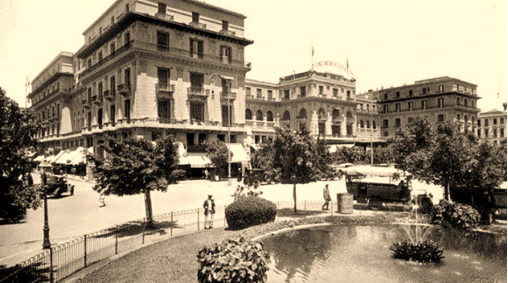Ihab Dabouh
Summary
Nanotechnologies, as the nanomaterials derived from them, now constitute a concrete opportunity for numerous innovative applications in the field of cultural heritage conservation. Thanks to the active collaboration of multidisciplinary research groups, in recent years various solutions have been developed that allow us to operate on historical matter in a more sustainable, respectful and conscious way. There are numerous products already on the market which, by exploiting the characteristics of nanotechnologies, make it possible to solve problems that cannot be effectively addressed with traditional products. To ensure that the choices are always commensurate with the real needs of the individual product, it is always necessary to prepare a preliminary diagnostic phase for the intervention, that includes the comparative experimentation of nanostructured or non-nanostructured products and treatments, allowing the qualitative evaluation of the intervention. In this frame, this research activity has been carried on, as part of a collaboration for the doctoral thesis of the architect Ihab Dabouh at the University of Cairo and the NIMA Department of the Euro-Mediterranean Institute of Science and Technology. The goal was to experiment nanostructured protective products on the surfaces of some brick samples, collected from a historic building in Kedivian city, a district of Cairo in Egypt. The method, used to define the cataloging for the realization of the sampling for the comparative experimentation of products for the protection of surfaces, is presented, followed by the experimentation in the NI.MA. laboratory.
References
I. De Rosario, F. El Haddad, A. Pan, R. Benavides, T. Rivas, M. J. Mosquera, Effectiveness of a novel consolidant on granite: laboratory and in situ results, Construction and building materials, (2015) pp. 140-149
N. Ditaranto, S. Loperfido, I. van der Werf, A. Mangone, N. Cioffi, L. Sabbatini, Synthesis and analytical characterisation of copper-based nanocoatings for bioactive stone artworks treatment, 399 (2010) pp 473-481
N. Ditaranto, I. D. van der Werf, R. A. Picca, M. C. Sportelli, L.C. Giannossa, E. Bonerba, G. Tantillo, L. Sabbatini, Characterization and behaviour of ZnO-based nanocomposites designed for the control of biodeterioration of patrimonial stoneworks, New Journal of Chemistry, 39 (2015) pp. 1-11
F. Fernandez, V. Piazza, In Situ Evaluation of Nanostructured Treatments for Stone Consolidation in the Temple Valley of Agrigento, Journal of Materials Science and Engineering,3 (2013) pp. 646-652
F. Fernandez, S. Germinario, Alteration and deterioration of natural stone materials: artificial aging as a tool of knowledge, VIIIth Conference “Diagnosis, Conservation and Valorization of Cultural Heritage” 14/15 December 2017, (2017) pp. 324-333
R. Giorgi, L. Dei, P. Baglioni, A new method for consolidating wall paintings based on dispersions of lime in alcohol, Stud. Conserv., 45, (2000) pp. 154-161
L. Dei, B. Salvadori, Nanotechnology in cultural heritage conservation: nanometric slaked lime saves architectonic and artistic surfaces from decay, J. Cult. Herit., 7, (2006) pp. 110-115
E. Hansen, E. Doehne, J. Fidler, J. Larson, B. Martin, M. Matteini, C. Rodríguez-Navarro, E. Sebastian C. Pardo, Price, A. de Tagle, J. M. Teutonico, N. R. Weiss, A review of selected inorganic consolidants and protective treatments for porous




